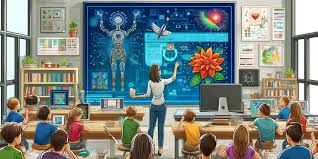Ethical Considerations in AI Art

AI art is powerful and accessible — but it also raises important ethical questions. As more people use tools like Promptchan, Midjourney, and DALL·E, it’s worth thinking about where these images come from, who owns them, and how they should be used.
1. Copyright and Originality
Most AI models are trained on large datasets scraped from the internet — including art created by real people. This raises questions:
- Is the generated image truly original?
- Does it copy the style of a specific artist?
- Should the artist be credited or compensated?
In many cases, the answer isn’t clear. Some platforms allow artists to opt out of training data, but the issue is still evolving legally and ethically.
2. Fair Use and Commercial Rights
Just because you generate an image doesn’t mean you can use it commercially — especially if it’s based on a prompt that resembles copyrighted work.
Some tools offer clearer licensing (e.g., paid Midjourney users can use images commercially), but not all platforms do.
3. Bias in the Training Data
AI models reflect the content they’re trained on. That means biases in race, gender, age, or cultural representation can show up in the results — even unintentionally.
For example:
- “Professional person” might default to a man in a suit.
- “Beautiful face” might skew toward Western beauty standards.
Being aware of these patterns helps you write better prompts and use AI more responsibly.
4. Replacing Human Artists?
AI art is efficient and affordable, but it raises concerns about jobs in creative industries.
While AI can support creativity, it shouldn’t be used to devalue the work of professional artists. Many creators now use AI as a starting point — not a replacement — in their process.
5. NSFW and Sensitive Content
Some AI tools can generate content that’s adult, violent, or offensive — even unintentionally. Platforms like Promptchan are known for stylized outputs that can drift into unsafe territory.
That’s why it’s important to:
- Use safe-for-work prompts when sharing publicly
- Choose platforms with content moderation
- Respect platform rules and audience expectations
Conclusion
AI art opens new creative possibilities — but also challenges how we think about originality, ownership, and fairness.
If you’re using Promptchan or similar tools, taking a thoughtful approach helps ensure your use of AI supports creativity rather than undermining it.